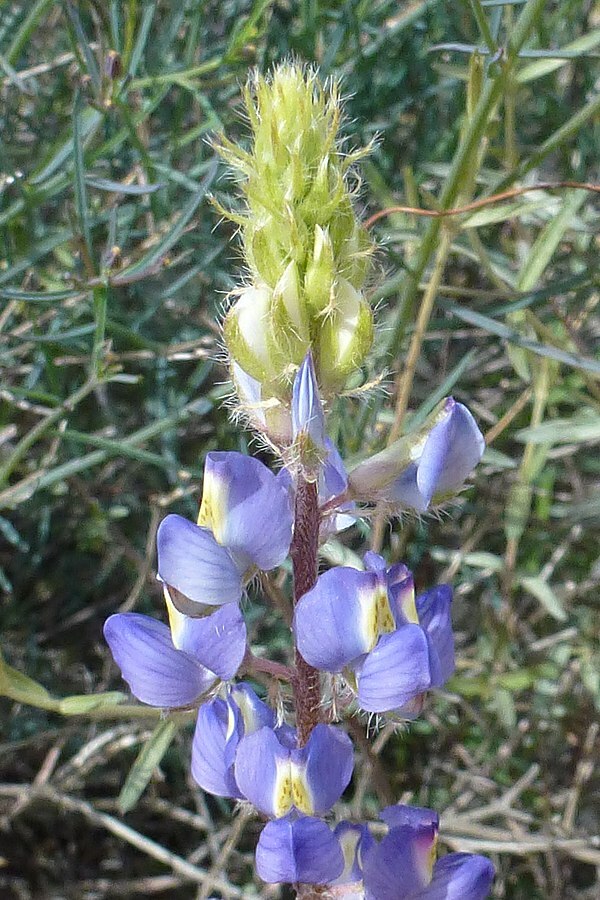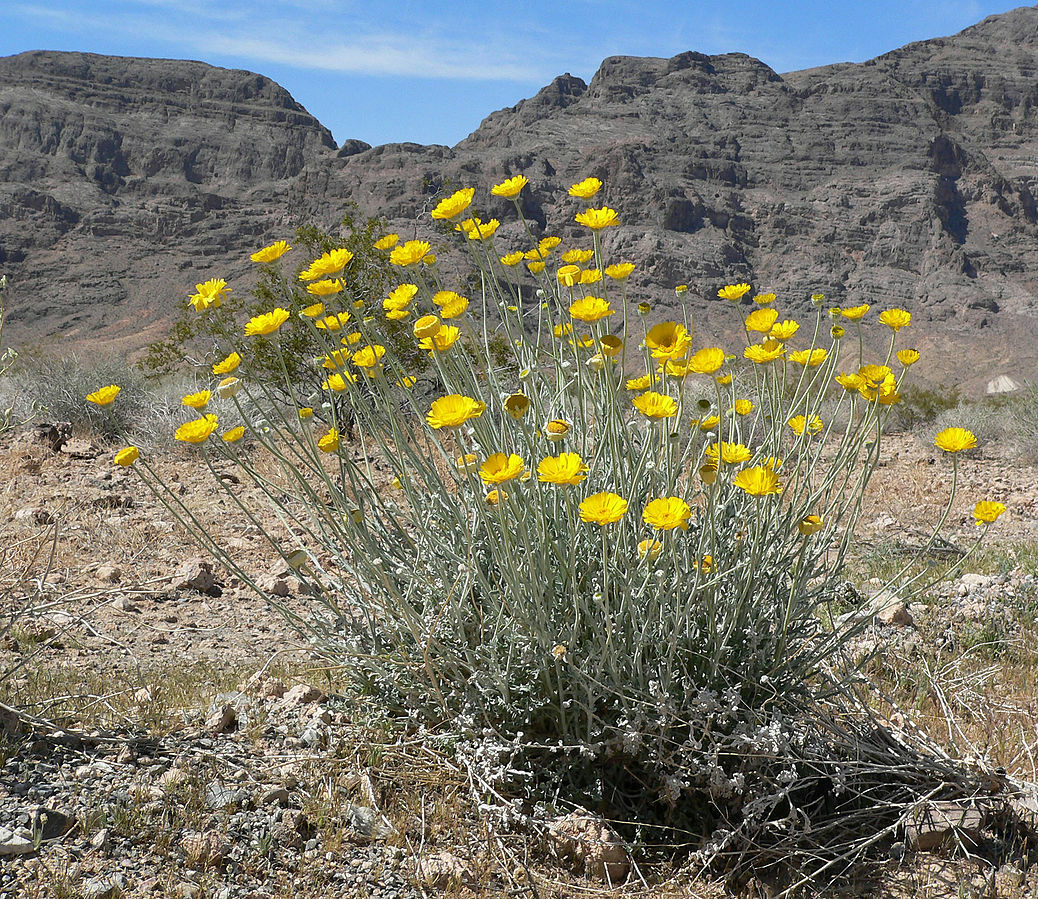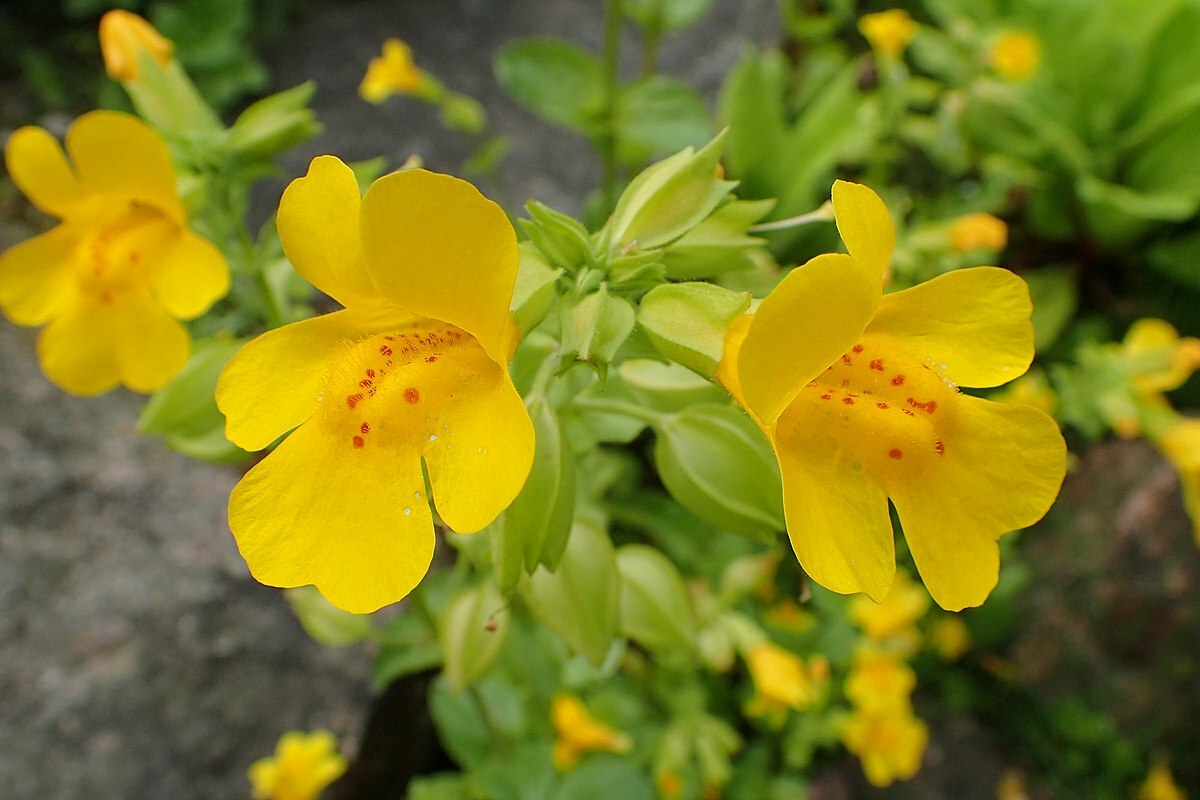The first week of May is National Wildflower Week!
To celebrate, we are highlighting three native wildflowers from different regions of the country in a four-part scavenger hunt series. If you live in the Southwest, we challenge you to visit your local National Forest this spring and find these three native wildflowers.
An important reminder before you get started. We often want to save the beauty of flowers by picking them, but it is important that we leave flowers for wildlife that depend on their seeds, nectar, and pollen for food. Save wildflowers’ beauty by taking a photo, not taking the plant.

Photo by Chris English.
Coulter’s Lupine
Lupinus sparsiflorus
- What I look like: Coulter’s Lupine is six to eighteen inches tall and has hairy leaves that are divided into five to eleven narrow leaflets. At the top of each plant’s stem is a spiral of blue or purple pea flowers with a patch of pink, white, or yellow. These lighter colors fade as the flower matures, and blue or purple petals become darker.
- When I bloom: January to May.
- Where you can find me: Coulter’s Lupine can be found in Arizona, Nevada, New Mexico, Southern California, and Utah in open fields and sandy or gravelly locations in slopes and deserts.
- A fun fact about me: In years with ample fall and winter rains, Coulter’s Lupine is so plentiful that it can carpet miles of the southern Arizona desert. Beautiful and easy to spot!

Photo by Stan Shebs.
Desert Marigold
Baileya multiradiata
- What I look like: Dessert Marigold grows in a large mound-shape with woolly, gray foliage at the base. Each of this plant’s many stems is capped with a bright yellow, daisy-like flower. A single Desert Marigold can grow to be one to two feet tall, two feet across, and produce 20 – 50 flowers!
- When I bloom: March to November.
- Where you can find me: Desert Marigold can be found in the desserts of Arizona, Nevada, New Mexico, Southern California, Texas, and Utah. Desert Marigolds thrive in dry, sandy soil and can be found in open areas, sandy plains, and gravely washes. Desert Marigolds are also common along roadsides, so if you live in the Southwest, you have probably already seen one!
- A fun fact about me: Desert Marigolds attract large numbers of native bees to Southwestern desert ecosystems, playing a crucial role in sustaining the ecological health of the region.

Photo by Krzysztof Ziarnek.
Seep Monkey Flower
Erythranthe guttata*
- What I look like: Depending on the variety, Seep Monkey Flower may be spindly and small or bushy and large and can be identified by its yellow, tubular flowers and distinctive red dots. The leaves of this plant are round, light green, and toothed.
- When I bloom: March to September.
- Where you can find me: The name Seep Monkey Flower comes from the wet locations this wildflower likes to grow. It can be found along sunny stream banks and wetlands in the western United States and thrives in rich, moist soils.
- A fun fact about me: Because Seep Monkey Flower can take so many shapes, many researchers have used it as a model to study the relationship between evolution and ecology.
* The scientific name of this plant was recently changed from Mimulus guttatus to Erythranthe guttata.
Ready to start your scavenger hunt? Find a National Forest near you.
Sources and Additional Resources for Identifying Wildflowers:
U.S. Forest Service Plant of the Week
U.S. Department of Agriculture PLANTS Database
Lady Bird Johnson Wildflower Center Plant Database
Cover photo by the U.S. Forest Service.
--------
Did you learn something new in this blog post? We hope so! The ecology that binds together everything on our National Forests is a fragile web, and we at the NFF are committed to doing all we can to ensure the healthiest forest ecology we can. To do so requires the support of caring individuals like you. Will you join us to ensure this critical work continues? Simply click here to join with thousands in this important work. Thank you!

